The Switching Labyrinth
 [Image: From "Labyrinths, Mazes and the Spaces Inbetween" by Sam McElhinney].
[Image: From "Labyrinths, Mazes and the Spaces Inbetween" by Sam McElhinney].Sam McElhinney, a student at the Bartlett School of Architecture, has been building full-scale labyrinths in London and testing people's spatial reactions to them. See photos of his constructions, below.
McElhinney explained his research to BLDGBLOG in a recent email, attaching a paper that he delivered earlier this month at a cybernetics conference in Vienna, where it was awarded best paper. Called "Labyrinths, Mazes and the Spaces Inbetween," it describes McElhinney's fascinating look at how people actually walk through, use, and familiarize themselves with the internal spaces of buildings, using mazes and labyrinths as his control studies.
In the process, McElhinney introduces us to movement-diagrams, Space Syntax, and other forms of architectural motion-analysis, asking: would a detailed study of user-behaviors help architects design more consistently interesting buildings, spaces that "might evoke," he writes, "a sense of continual delight"? Pushing these questions a bit further, we might ask: should all our buildings be labyrinths?
 [Images: Movement-typologies from "Labyrinths, Mazes and the Spaces Inbetween" by Sam McElhinney].
[Images: Movement-typologies from "Labyrinths, Mazes and the Spaces Inbetween" by Sam McElhinney].Early in the paper, McElhinney differentiates between the two types of interior experiences—between mazes and labyrinths.
- A path system can be multicursal: a network of interconnecting routes, intended to disorient even the cunning. It may contain multiple branches and dead ends, specifically designed to confuse the occupant. This is a maze.
Alternatively, a path can form a single, monocursal route. Once embarked upon, this may fold, twist and turn, but will remain a constant and ultimately reach a destination; this is a labyrinth.
The experience of walking these two topologies is very different.
How can architects design for this switch?
 [Images: From "Labyrinths, Mazes and the Spaces Inbetween" by Sam McElhinney].
[Images: From "Labyrinths, Mazes and the Spaces Inbetween" by Sam McElhinney].McElhinney's argument segues through a discussion of Alasdair Turner’s Space Syntax investigations (and the limitations thereof). He describes how Turner put together a series of automated test-runs through which he could track the in-labyrinth behavior of various "maze-agents"; these reprogrammable "agents" would continually seek new pathways through the twisty little passages around them—a spatial syntax of forward movement—and Turner took note of the results.
Turner's test-environments included, McElhinney explains, a maze that "was set to actively re-configure upon a door being opened, altering the maze control algorithms" behind the scenes, thus producing new route-seeking behavior in the maze-agents.
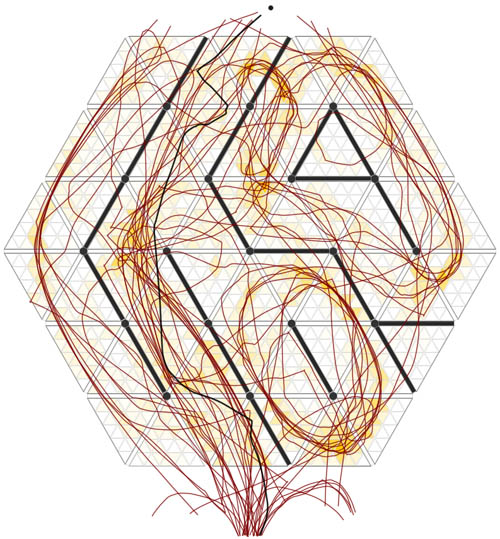

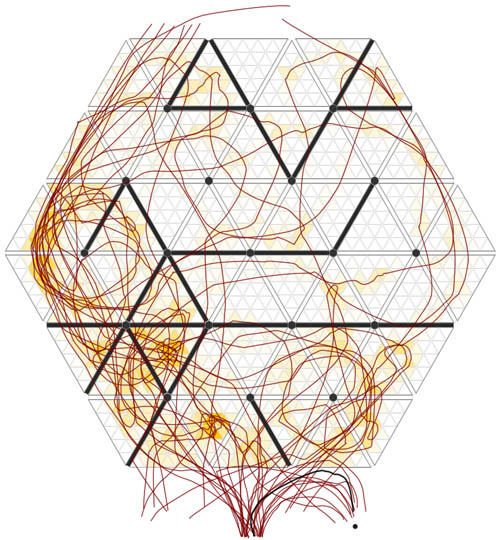 [Images: From "Labyrinths, Mazes and the Spaces Inbetween" by Sam McElhinney].
[Images: From "Labyrinths, Mazes and the Spaces Inbetween" by Sam McElhinney].Unsatisfied with Turner's research, however, McElhinney went on to build his own full-scale "switching labyrinth" near London's Euston Station. Participants in this experiment "animated" McElhinney's switching labyrinth by way of "a stepper motor and slide mechanism" that, together, were "able to periodically shift, 'switching' openings to offer alternative entrance and exit paths."
The participants walked in and their routes warped the labyrinth around them.
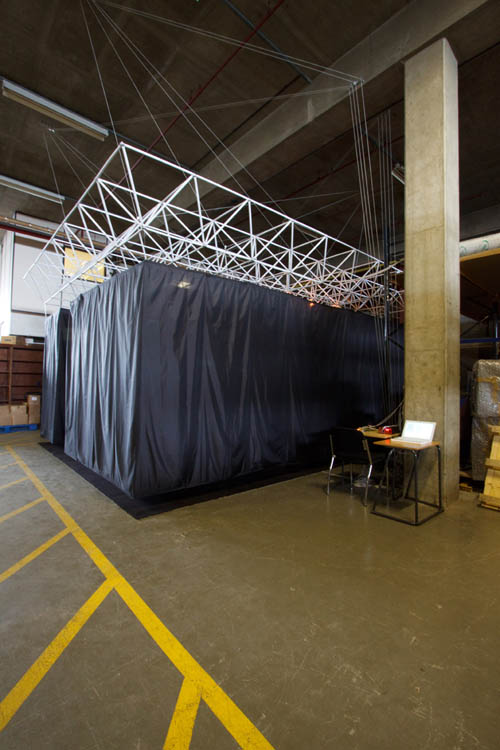 [Image: Sam McElhinney's "switching labyrinth," or psycho-cybernetic human navigational testing ground, constructed near Euston Station].
[Image: Sam McElhinney's "switching labyrinth," or psycho-cybernetic human navigational testing ground, constructed near Euston Station].After watching all this unfold, McElhinney suggested that further research along these lines could help to reveal architectural moments at which there is an "emergence of labyrinthine, or familiar, spatialities within an unknown or changing maze framework."
There can be a place or moment within any building, in other words, at which the spatially unfamiliar will erupt—and from movement-pathway studies we can extrapolate architectural form, buildings that perfectly rest at the cognitive flipping point between maze and labyrinth, familiar and disorienting, adventurous and strange.


 [Images: Sam McElhinney's "switching labyrinth"].
[Images: Sam McElhinney's "switching labyrinth"].The cybernetics of human memory and in-situ spatial decision-making processes provide a framework from which we can extract and assemble a new kind of architecture.
 [Image: From "Labyrinths, Mazes and the Spaces Inbetween" by Sam McElhinney].
[Image: From "Labyrinths, Mazes and the Spaces Inbetween" by Sam McElhinney].How we move through coiled, labyrinthine environments can be studied for insights into human navigation, physiology, and more.
 [Image: From "Labyrinths, Mazes and the Spaces Inbetween" by Sam McElhinney].
[Image: From "Labyrinths, Mazes and the Spaces Inbetween" by Sam McElhinney].Briefly, I'm reminded here of 765's look earlier this winter at the history of all-text adventures, including Zork and the Colossal Cave Adventure. "The game is a landscape," 765 writes, and the parallels with McElhinney's mazes should be obvious, "but this isn't a landscape that can be appreciated visually, it can only be apprehended and understood structurally and functionally. The similarity of the game's structure to the flowcharts used by computer scientists is obvious, it is a network of nodes with paths between them that control how the landscape can be moved through."
Indeed, 765 adds, "the structure itself has a form, a branching self-similar network that is as intricate as any graphic representation."
In any case, McElhinney sent over a huge range of maze and labyrinth precedents that served as part of his research; some images from that research appear below.
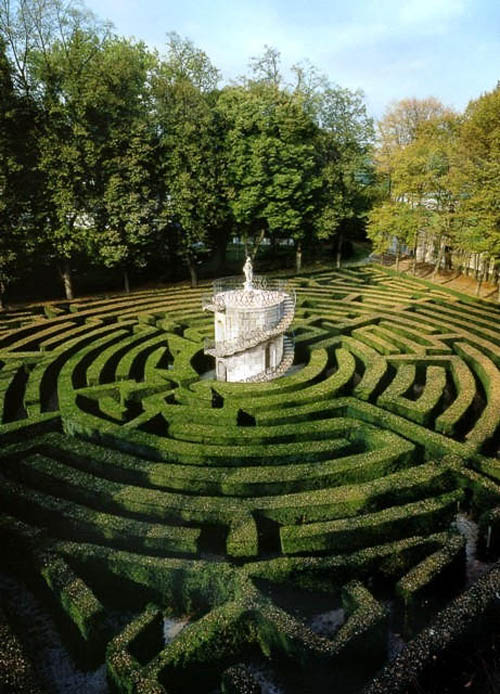

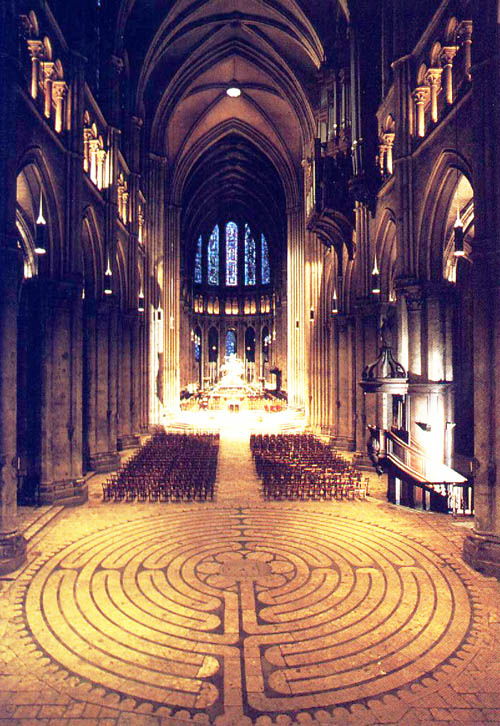

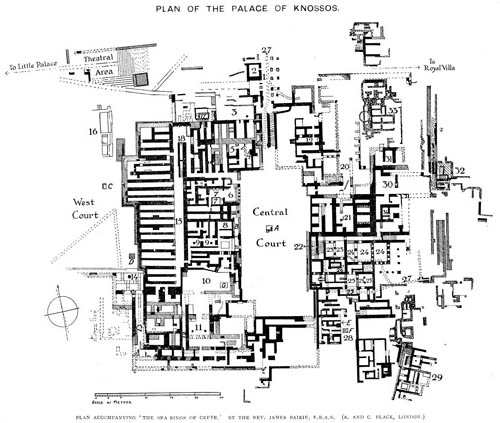 [Images: Maze-studies from "Labyrinths, Mazes and the Spaces Inbetween" by Sam McElhinney].
[Images: Maze-studies from "Labyrinths, Mazes and the Spaces Inbetween" by Sam McElhinney].It's fascinating research, and I would love to see it scaled way, way up, beyond a mere test-maze in a warehouse into something both multileveled and city-sized.





Comments are moderated.
If it's not spam, it will appear here shortly!
Labyrinths fascinate me! But in response to your last statement, and the premise, where is the intersection of function and aesthetic in this kind of approach? How do delight and interest interfere with the other uses of a space?
In terms of city experiences, I think many urban residents would know sites they describe as labyrinthine or mazelike; is this related to the structure itself or their use of and familiarity with it? Do we need to build labyrinths anew, or just encourage a specific kind of spatial interaction in existing multilevel, city-sized spaces?
I don't know if I'd have the same emotional response to series of brown curtains knowing that I could always just force my way out.
I do see how maze-like qualities are good as grids can be depressing (because the end is in view?)
Geoff
great post. I liked the switching protocols- reminded me [and probably you too!] of the scifi B movie: 'Cube'.
Also, the distinction between unicursal and multicursal paths is something that Wendy Faris discusses in her incredible book _Labyrinths of Language_. She covers writers like Borges, Butor, Joyce, Cortazar... who all employ various forms of linguistic labyrinthine construction. The distinction between a unicursal and a multicursal labyrinth is as follows: in a multicursal one, the navigator needs intellectual acumen and stamina; it is a spatial problem. In a unicursal one, the navigator is aware that the end is only hidden in time, not in space. It's a problem of temporal stamina, in the second case, since the 'end' is known.
Also note, Ben Nicholson [who many moons ago, was known to us for his marvellous 'Appliance house' project] has been working for years on things labyrinthine. He's drawn hundreds, possibly thousands of them, by hand, and has had his students construct them in situ, as well as doing so himself. Very interesting work. Cheers!
Geoff, thanks for calling attention to this - it's absolutely fascinating. I seem to recall, too, that some months ago UCL scientists (can't remember which discipline) published findings in one of the popular scientific journals on spatial memory and navigation. Interesting overlap.
Long time reader, first time poster. This also puts me in mind of the kinds of landscapes created for fantasy and video games. As a person who designs adventure games in the style of Dungeons & Dragons, I'm building labyrinths and mazes all the time, and thinking about how to navigate them.
There's a pretty interesting academic consideration of imaginary maze/labyrinth design here:
http://www.darkshire.net/jhkim/rpg/dnd/dungeonmaps.html
i know it is possible for a building to evoke a sense of constant irritation ... ION Orchard in Singapore as example
Unlike walkable city streets which are easily navigable because of multiple entry points, malls are hellish because they tend only to have a couple... and I'm not sure about architectural structures emulating rules used to design mazes...
Labyrinths offer a beautiful insight into human interaction with their surroundings. Choice and memory combined. Great article, and wonderful blog!
Has the author ever been to Ikea? Those people have the whole labyrinth idea down pat!
wow this is amazing!!!
is the installation still there at Euston?!?!
Awesome! I'm reminded of HH Holmes, the Chicago mass murderer who built a horrific maze out of a couple floors of a hotel. He killed his construction workers every two weeks to make sure nobody ever learned the whole space. http://en.wikipedia.org/wiki/H._H._Holmes
Is the paper available anywhere outside the proceedings of the conference?
I find the concept of the labyrinth as a mechanism for spatial delight that utilises disorientation, strangeness and unfamiliarity within a circulation experience quite thrilling. I would be interested to see the results of an experimental application to a specific typology or program, traditionally the library or archive has had some fictional experimentation but it would be interesting to see how it could be applied in a contemporary context that challenges the way you interact and access books, especially as to what impact that could have upon accidental discoveries of knowledge.
Post a Comment